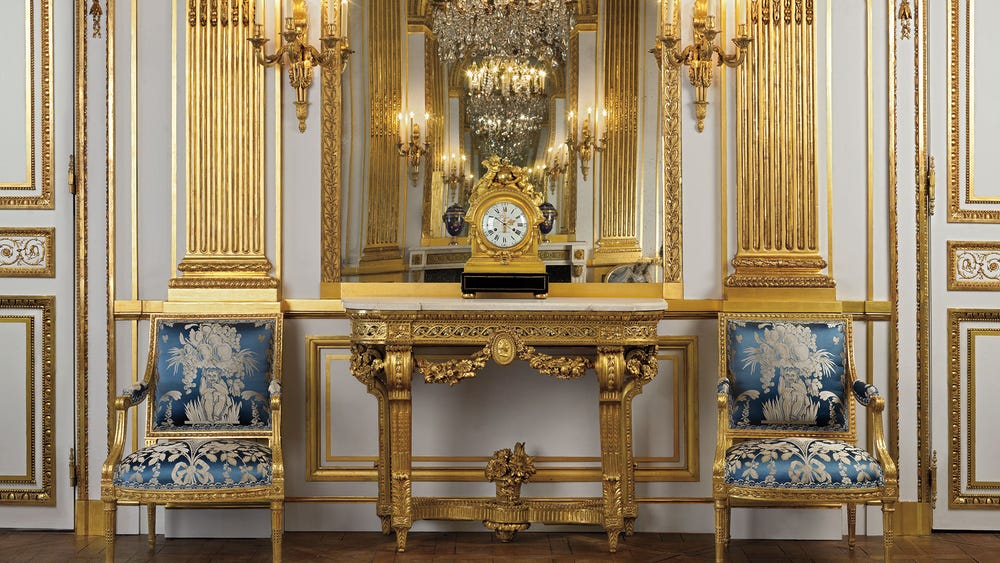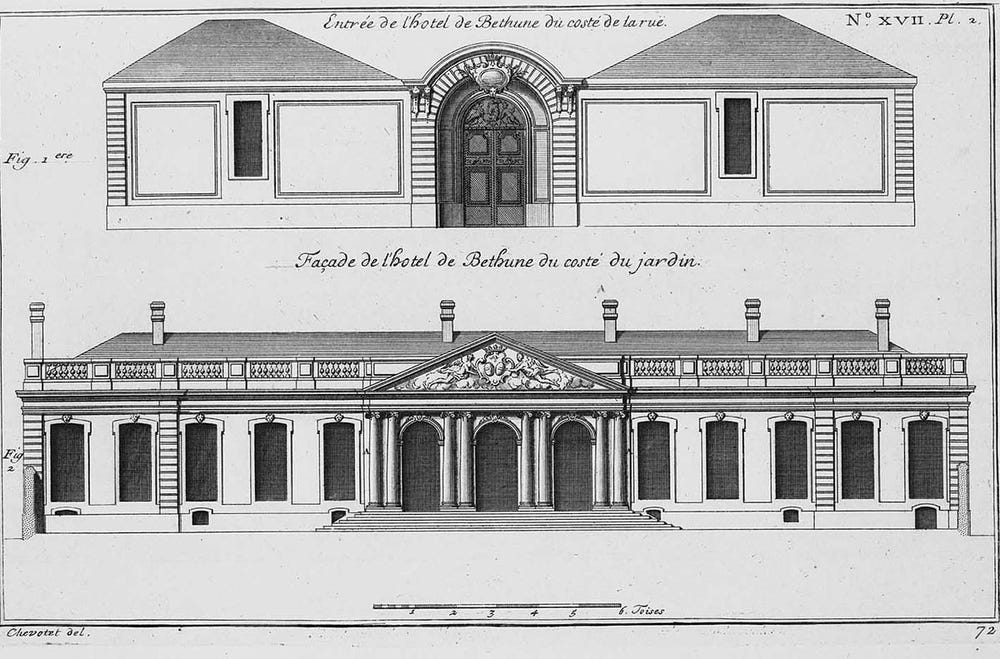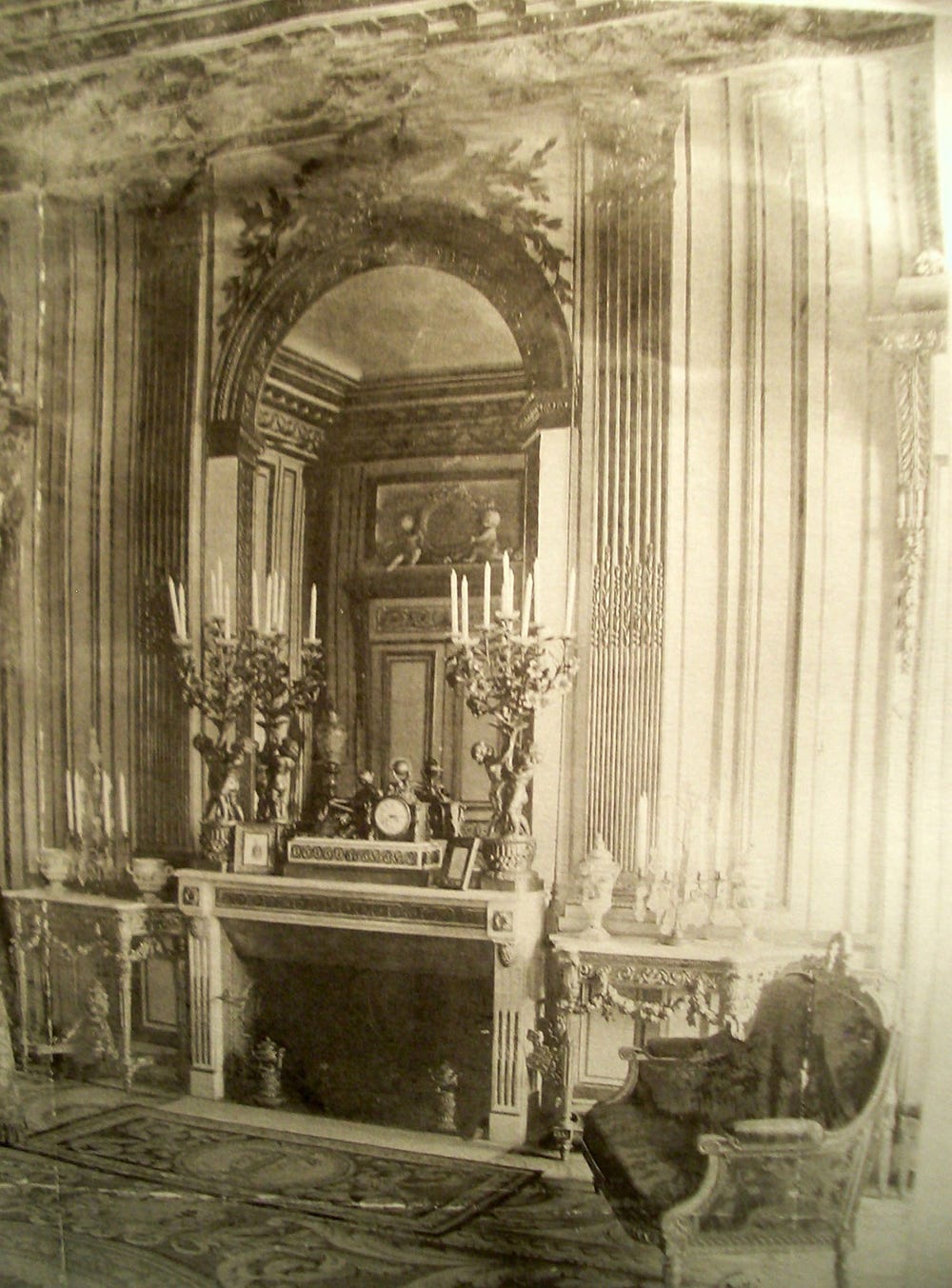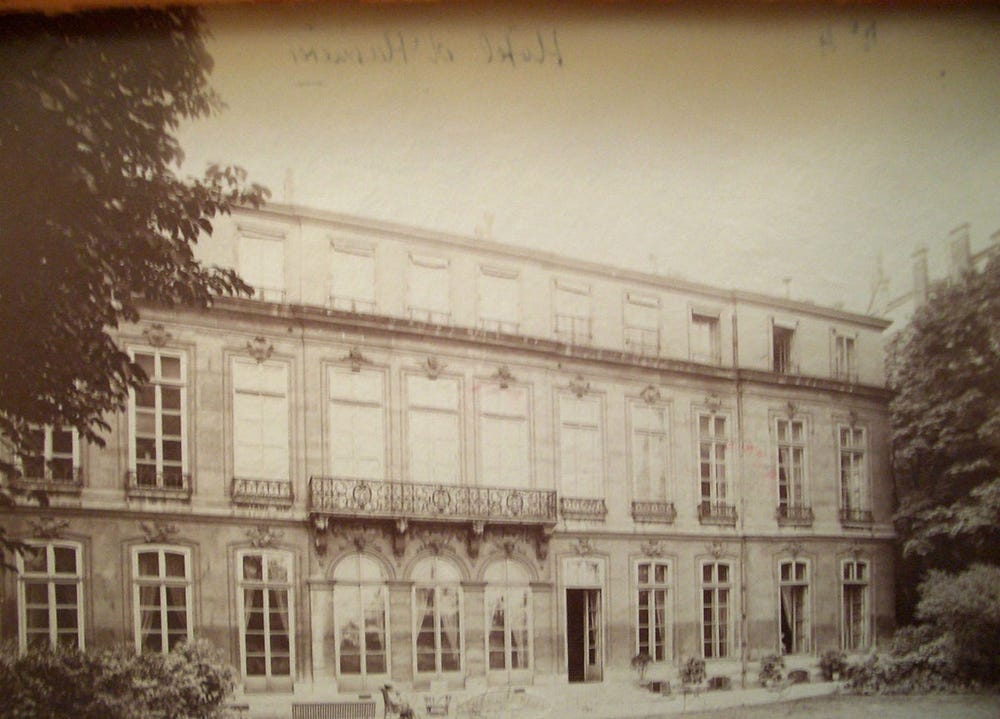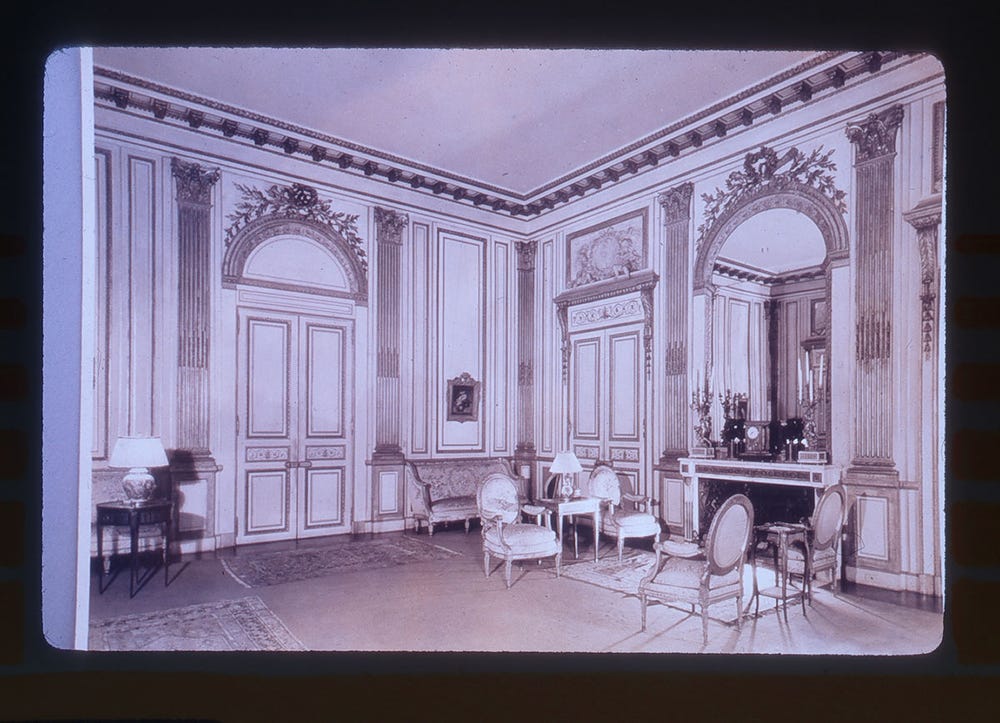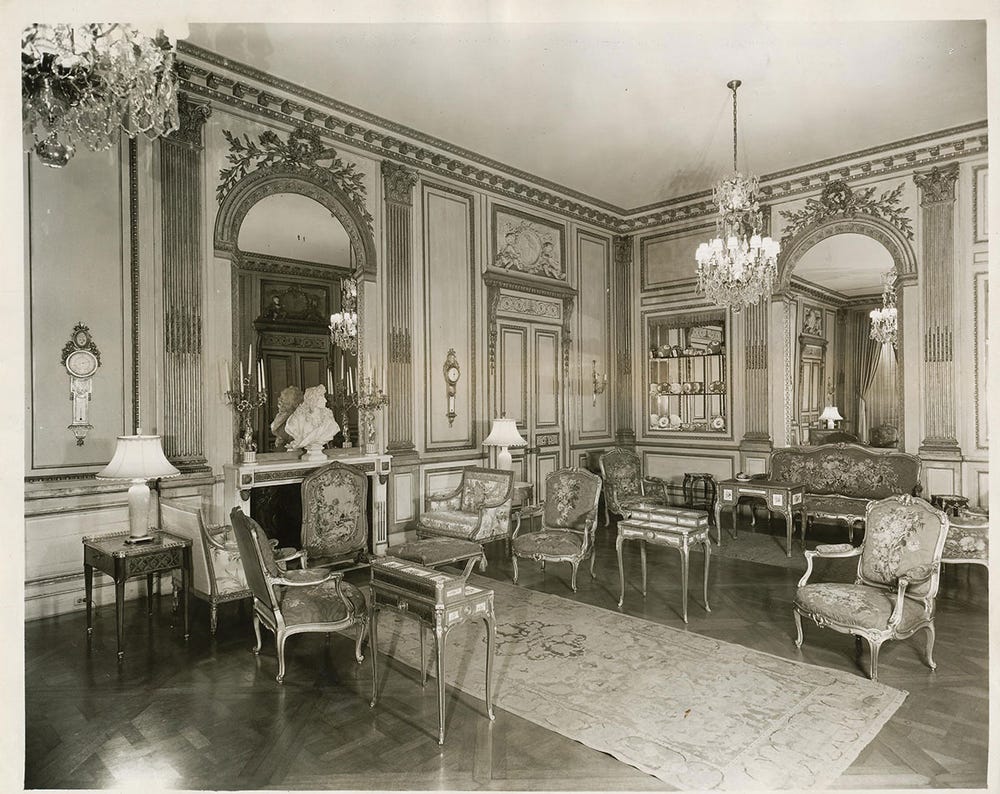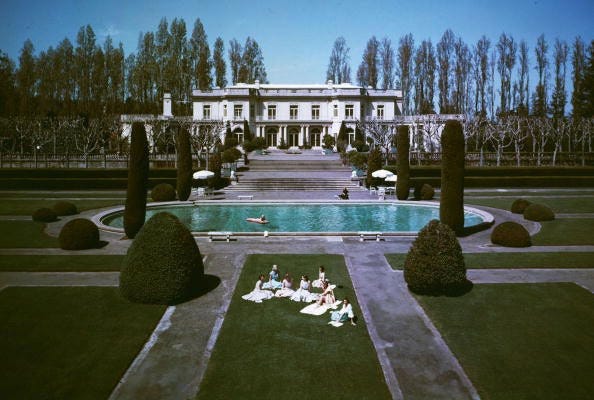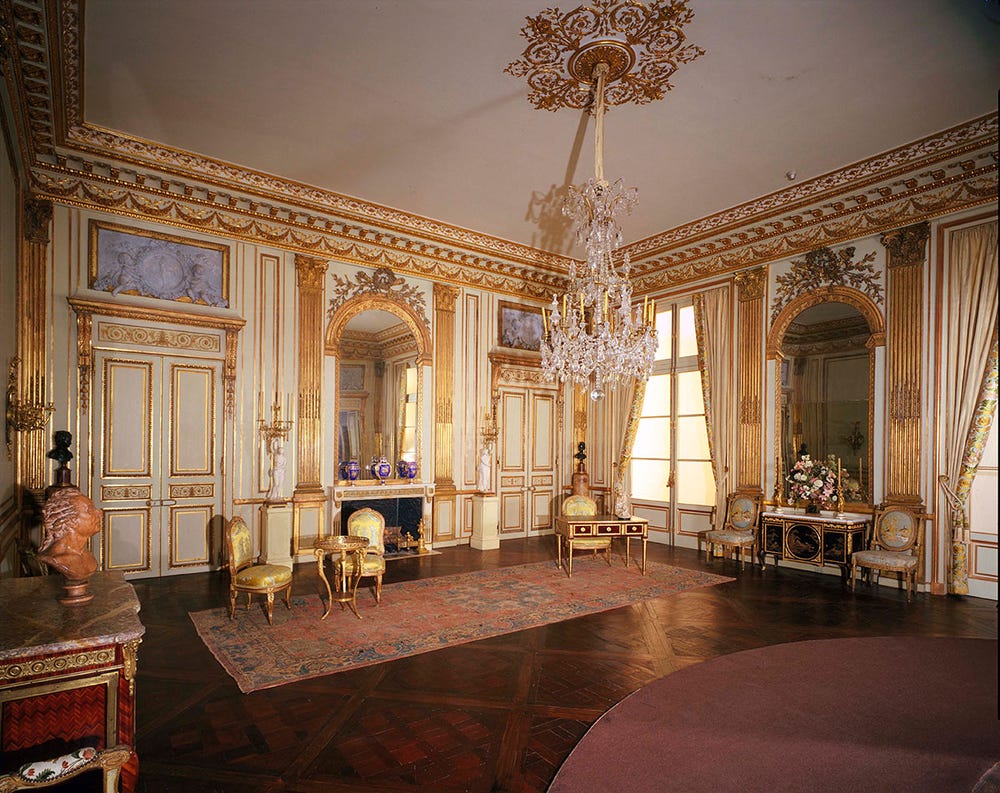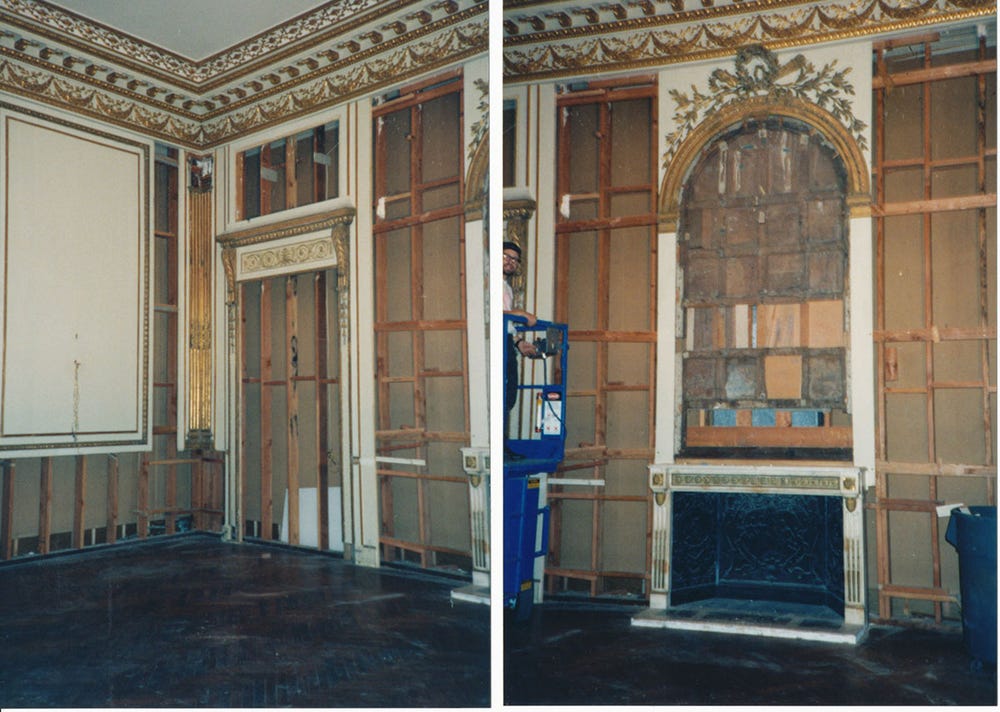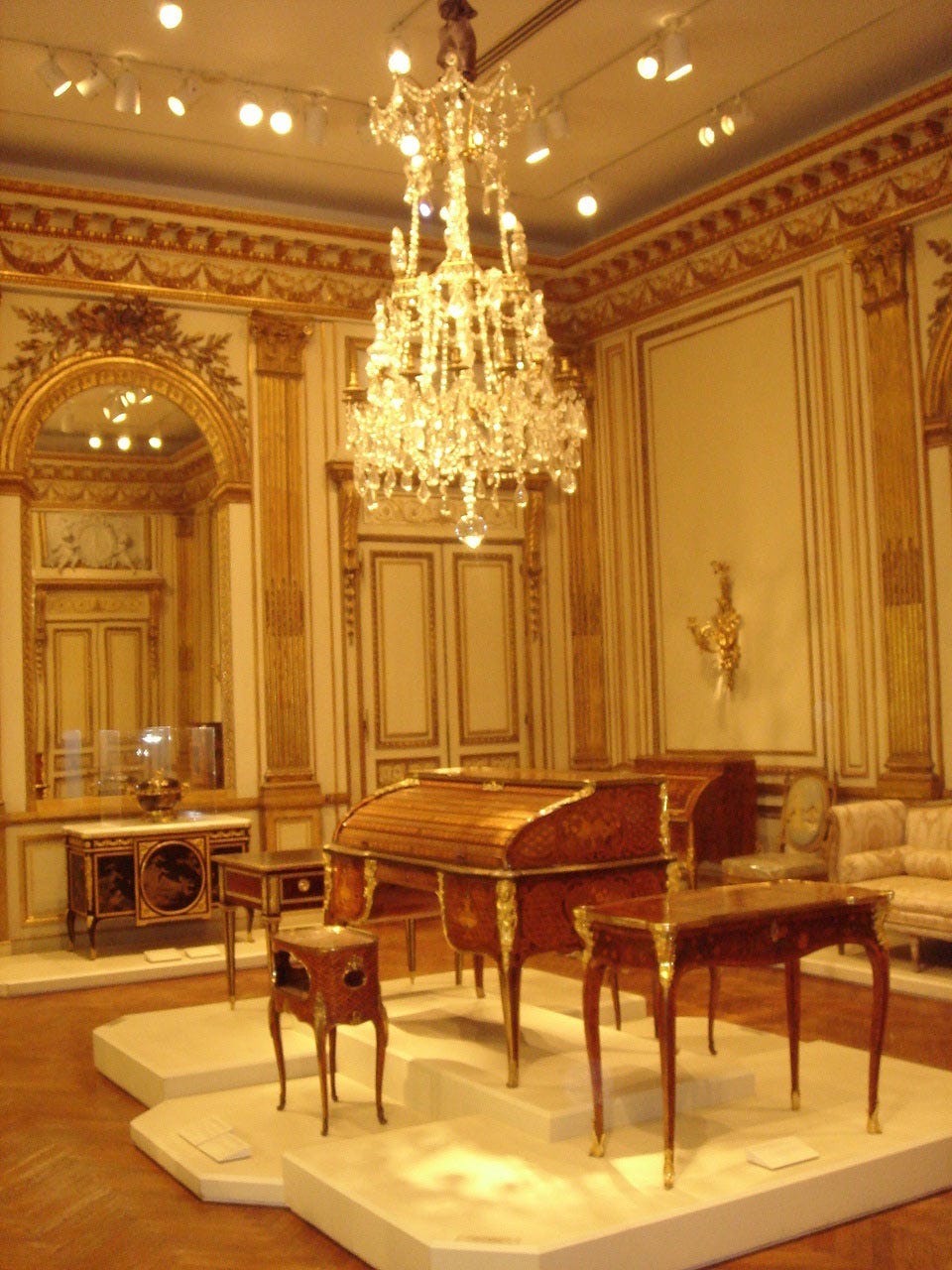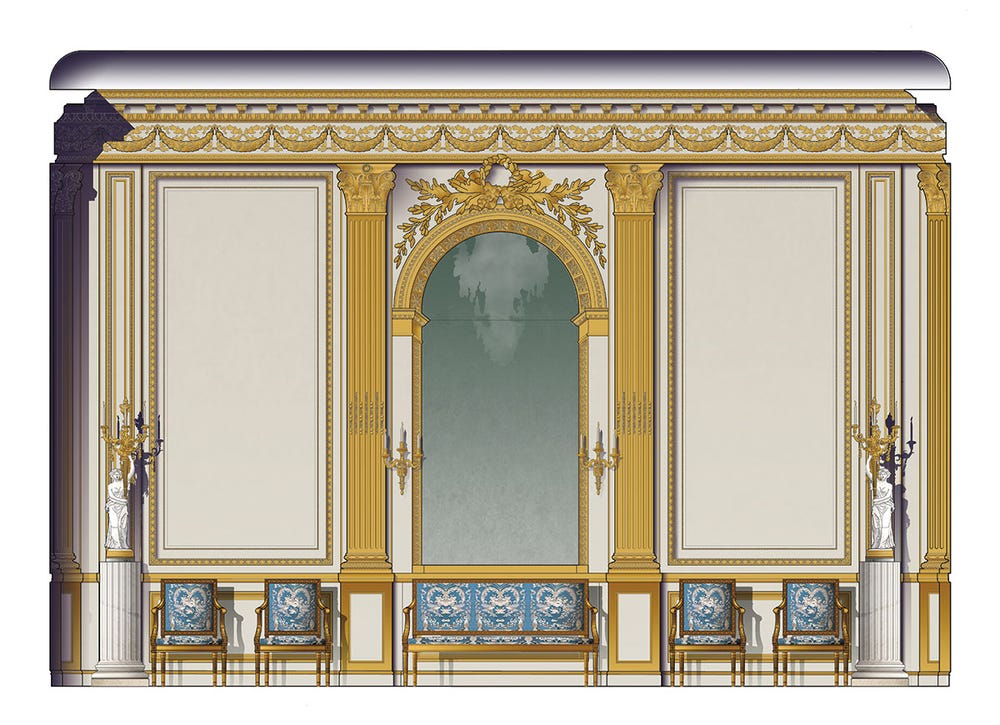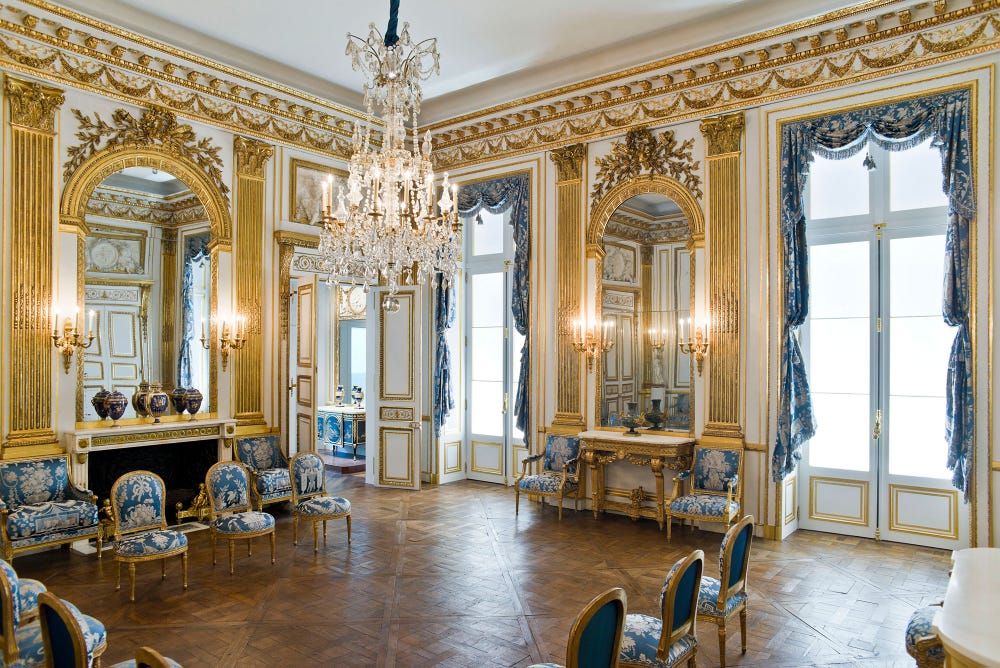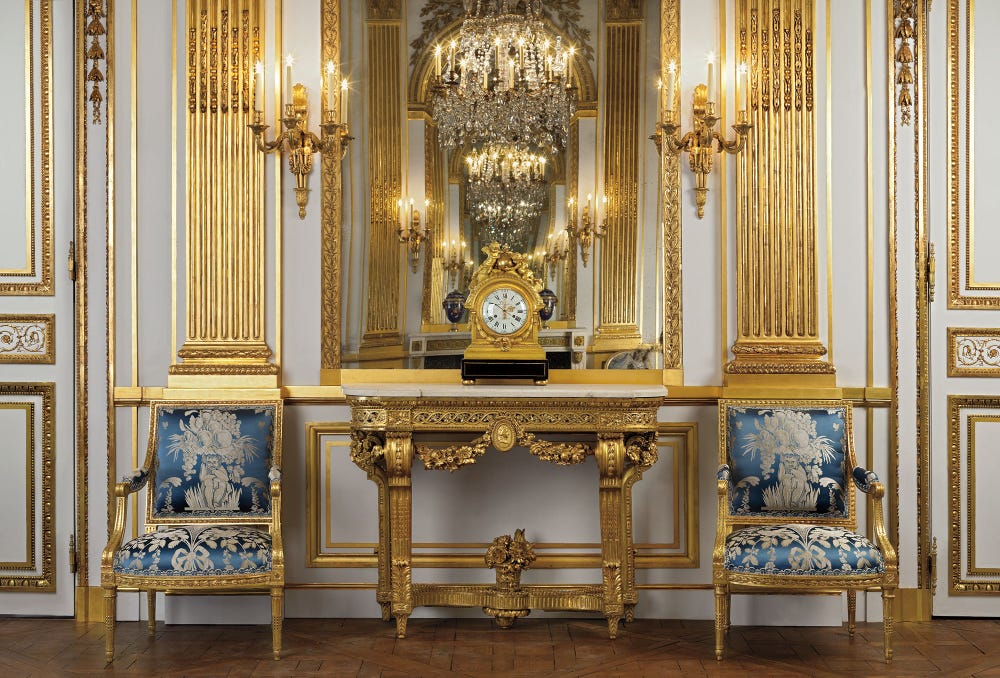This magnificent salon is one of the finest examples of French neoclassical interior architecture in a museum and the only complete example of a pre-Revolutionary Parisian salon on display anywhere. Designed during the reign of Louis XVI, it was originally installed in the Hôtel de la Trémoille on Paris's Rue Saint-Dominique as the salon de compagnie (the principal reception room) of this aristocratic mansion. The architecture of the Salon Doré — with its giant gilded Corinthian pilasters framing four arched mirrors crowned with trophies of Love and War — was intended to invoke the grandeur of ancient Rome. Such a stately classical impression conveyed the knowledge and the social status of the owners, the ducs de la Trémoille — a French aristocratic family of ancient lineage — who placed this formal entertaining salon quite literally in the heart of their house.
Timeline
The Salon Doré has been moved no less than six times. Its began in 1877, when the Hôtel de la Trémoille was razed during Haussmann’s modernization plan of Paris to accommodate the construction of the Boulevard Saint-Germain. The paneling was first reinstalled in the nearby Hôtel d’Humières on the Rue de Lille. However, when that structure was torn down some 27 years later to make way for new apartment buildings, the salon reappeared across the Atlantic as the centerpiece of the New York mansion of American banker and arts patron Otto Kahn. After Kahn’s death, the room was purchased by art dealers the Duveen Brothers in 1936 and installed in their midtown Manhattan premises. In 1955, Duveen sold the room to Mr. and Mrs. Richard Rheem for installation in their Burlingame residence. It was the Rheems who donated the salon to the Legion of Honor in 1959. It has since been reinstalled three times at the Legion.
Research and Renovation
In the last century, the Salon Doré lost its associations with the Hôtel de la Trémoille, acquiring a false history of originating in the Hôtel de Crillon during Duveen’s ownership. Martin Chapman, curator in charge of European art, uncovered the salon’s true origins through research undertaken by Dr. Bruno Pons and historic upholsterer Xavier Bonnet. In a felicitous coincidence, the paneling turns out to have been constructed for the sister of the Prince de Salm, the man who built what was to become the Palais de la Legion d’Honneur, upon which the architecture of our own Legion of Honor is based. Over the course of 18 months (2013 – 2014), the Salon Doré underwent comprehensive conservation, with the aim of returning the room to its original form as a complete domestic interior, replete with 18th-century parquet flooring, its windows and doors, and a new lighting scheme. Historically accurate furniture and upholstery was added to reflect the original inventory as uncovered by Bonnet. The addition of a new suite of armchairs displayed around the walls and a second row of side chairs in the middle reflects the essential relationship of the furnishing to the paneling and gives insight into how these rooms were used in the years before the French Revolution.
Salon Doré Timeline
1781 — Original Location: Hôtel de La Trémoille, Paris
The paneling is installed in the Hôtel de La Trémoille, rue Saint-Dominique (formerly the Hôtel de Neuchâtel, then the Hôtel de Béthune, and then the Hôtel de Châtillon) in 1781. It was designed for Jean-Bretagne-Godfroy, duc de La Trémoille et de Thouars (1737 – 1792) and his second wife, Marie-Maximilienne, princesse de Salm-Kyrbourg, as a new salon for the duchess. The duchess’s brother built the Hôtel de Salm overlooking the Seine (now the Palais de la Légion d’Honneur), which was the model for the Legion of Honor museum. The Salon Doré was probably designed by the family architect Pierre-Auguste Delapoize.
1877 — Hôtel de La Trémoille demolished
This hotel was one of the many victims of Haussmann’s famous urban remodeling of Paris. The owner, the Marquise de Croix, was forced to give up this mansion for the construction of the Boulevard Saint-Germain.
1879 — Hôtel d’Humières rue de Lille
Following the demolition of the Hôtel de la Trémoille, the Marquise de Croix acquired the Hôtel d’Humières. She saved some of the La Trémoille paneling and reused it in her new home. The boiserie of the Salon Doré was installed on the ground floor overlooking the garden. Some of the old paneling from the Hôtel d’Humières was sold to Baron Ferdinand de Rothschild for his new house, Waddesdon Manor in England.
1905
In 1905 the Hôtel d’Humières was demolished to make way for several apartment buildings. This caused a public outcry resulting in the establishment of the Société d'Histoire et d'Archéologie du VIIe Arrondissement de Paris. The salon was extensively photographed before demolition.
1918 — Otto Kahn Mansion, 1 East 91st Street, New York
The boiserie was installed as the “French salon” in banker Otto Kahn’s massive new mansion on 5th Avenue and 91st Street. Some of the room's original elements were moved around. The narrow panels on the chimneypiece wall were moved to the corners, and the large mirror in the back wall was replaced by a set of double doors.
1934 — Duveen Brothers, 720 Fifth Avenue, New York
After Kahn’s death, his widow sold the room to the Duveen Brothers. It was installed as one of the main showrooms in Duveen Brothers in New York by the decorating firm of Alavoine. Photographs of 1946 – 1947 show how the room was stretched from 30 feet to 43 feet in one dimension and from 30 feet to 23 feet in the other, with the showcases sunk into the walls.
1952 — Richard Rheem, La Dolphine, Burlingame
The Salon Doré was sold to Mr. Rheem by Edward Fowles of Duveen, who claimed the room was from the more famous Hôtel de Crillon, and designed by the equally famous architect, Jacques-Ange Gabriel. This was an invented provenance. It was installed in the Rheem's home, La Dolphine, by the Parisian decorating firm of Decour.
1962 — Legion of Honor, San Francisco
The Salon Doré was accepted as a gift from Mr. Rheem in 1959 on the advice of the architectural historian John Harris. Professor Winfield Wellington researched the room and rediscovered its earlier provenance in the Hôtel d’Humières and advised on its installation. Built to Professor Wellington’s specifications in Gallery 7 of the Legion of Honor, the room included windows, doors, a parquet floor, and a ceiling. It was restored to what were then believed to be its original dimensions of 30 x 30 feet.
1990 — Legion of Honor retrofit
In 1990, the Salon Doré in Gallery 7 was deinstalled as part of the comprehensive building seismic retrofit undertaken during the early 1990s.
1995 — Salon Doré re-installed at the Legion of Honor
When the Legion of Honor reopened in 1995, the Salon Doré was installed in Gallery 11 and shown as a “paneled environment” without its parquet flooring, ceiling, windows, and two pairs of doors. It became a gallery for the general display of French furniture and decorative arts.
Architectural rendering by Andrew Skurman
2014
The Salon was reinstalled after 18 months of conservation work on the carving, gilding, and paint with its missing architectural elements,including the doors, windows, ceiling, floor, and a mirror, reinstated. Furniture was acquired to reflect the inventory of 1791 and arranged to reflect the social history of pre-revolutionary salons. The upholstery and curtains were researched and executed by Xavier Bonnet according to the inventory and historical documents. A new lighting scheme used historical light fixtures.
Present
The Salon Doré is currently installed with new windows, a ceiling, and an 18th century parquet de Versailles, with its dimensions restored to their original square form. The furniture scheme includes 8 armchairs, 10 side chairs, 2 bergères, and a canapé upholstered in blue and white silk, as well as two console tables and a clock. The lighting suggests the early evening of the winter months, when these salons were mostly used.
For more information see the catalogue The Salon Doré from the Hôtel de La Trémoille (San Francisco: Fine Arts Museums of San Francisco, 2014)
